
Modderfontein
Modderfontein is well known for the location there of the dynamite factory, and this is also how it started life in 1896. It used to be a factory village all out in the country. It is slowly being swamped by urban sprawl. And now even more so since a Chinese company has bought the whole area with plans to develop it. GPS coordinates: 26.09924°S 28.151465°E elevation: 1558m.
History
Franz Hoenig came out to South Africa in 1895 with instructions from the Nobel company in Hamburg to build a dynamite factory. First production was achieved in June 1896 and full production in November the same year.
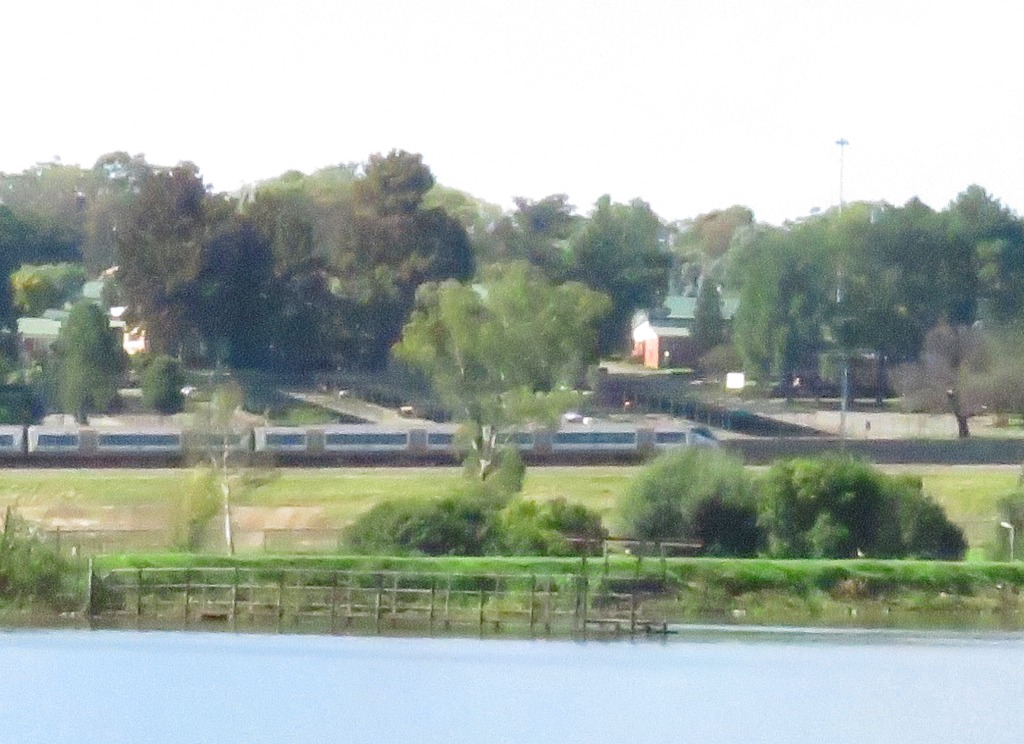 Many of the buildings erected in those early days still exist, and are well looked after. There is the house of the factory manager, the Franz Hoenig house, the house of the chief engineer, now the museum, the Club or than it was the casino, the hospital and some buildings in the factory.
Over time the factory expanded by adding chemical plants to make ammonia, nitric acid, ammonium nitrate, urea, LAN and a few others. The explosives plant was at one time the biggest dynamite factory in the world.
Many of the buildings erected in those early days still exist, and are well looked after. There is the house of the factory manager, the Franz Hoenig house, the house of the chief engineer, now the museum, the Club or than it was the casino, the hospital and some buildings in the factory.
Over time the factory expanded by adding chemical plants to make ammonia, nitric acid, ammonium nitrate, urea, LAN and a few others. The explosives plant was at one time the biggest dynamite factory in the world.
The village has been changing since AECI started selling off pieces of property in the nineties. All the residential houses of the factory are gone and replaced with town house complexes. But progress not only stopped there, now there is the Gautrain cutting a corridor through the property. And the very latest is that the whole property of about 2400ha has been sold to a Chinese company for development.
The Dynamite Company Museum
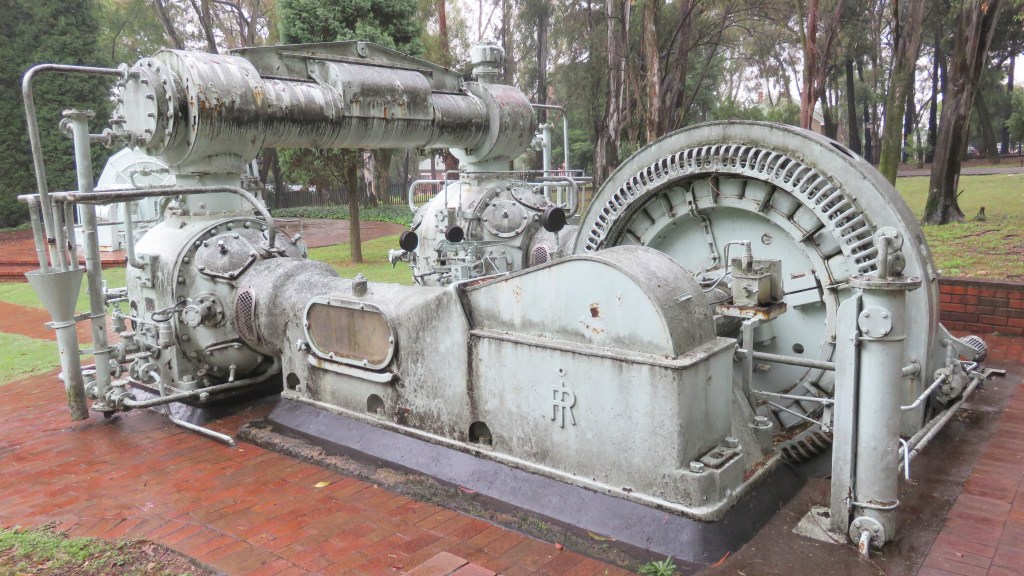 The museum is mostly about the village, factory and dynamite production at Modderfontein. The house was originally the residence of the Chief Engineer. In addition there is the Franz Hoenig house, the first factory
The museum is mostly about the village, factory and dynamite production at Modderfontein. The house was originally the residence of the Chief Engineer. In addition there is the Franz Hoenig house, the first factory 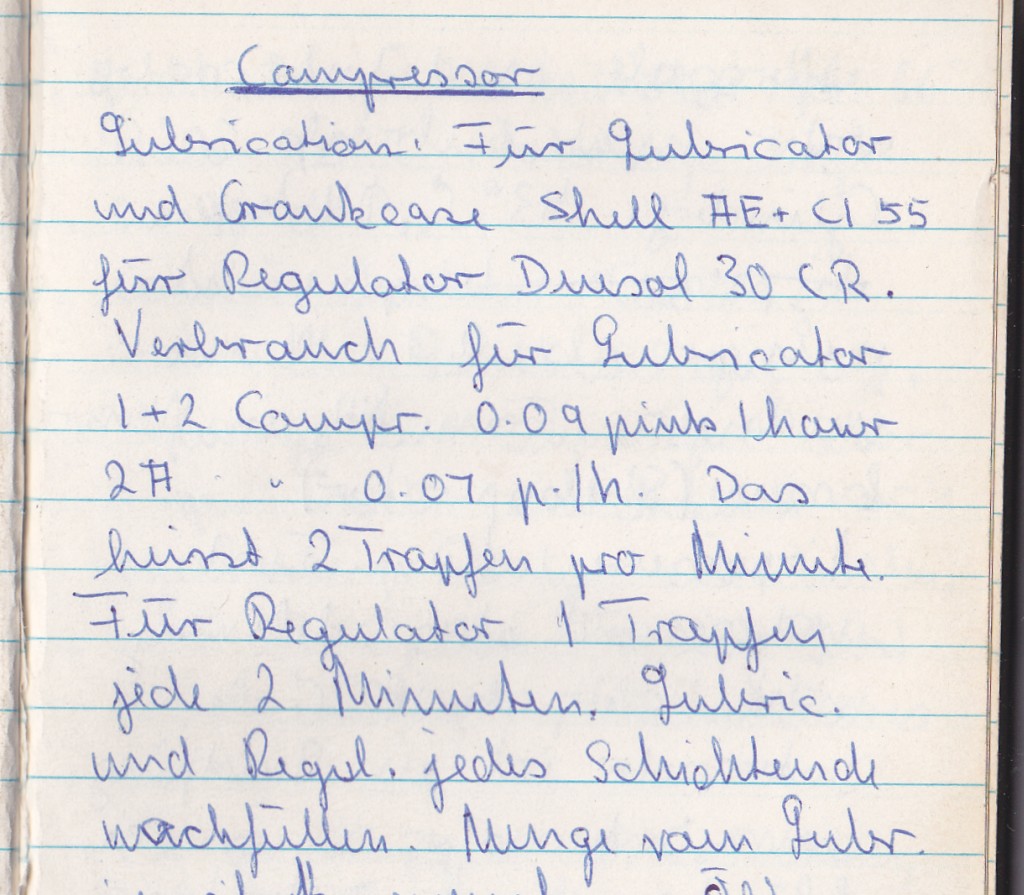 manager, and an outside exhibition of machinery. Here I found this large compressor, an Ingersol Rand machine. Two stages with an intercooler in between, turning at 214 rpm(revs per minute) and drawing 600kW. And why do I pay so much attention to this machine? It's because I used to operate it, about 50 years ago. On the right is an extract from my note book, and we now know that the crankcase lubricator had to run at two drops per minute. Sorry you can't read it, in those days I was in between writing in German and English.
manager, and an outside exhibition of machinery. Here I found this large compressor, an Ingersol Rand machine. Two stages with an intercooler in between, turning at 214 rpm(revs per minute) and drawing 600kW. And why do I pay so much attention to this machine? It's because I used to operate it, about 50 years ago. On the right is an extract from my note book, and we now know that the crankcase lubricator had to run at two drops per minute. Sorry you can't read it, in those days I was in between writing in German and English.
Franz Hoenig house
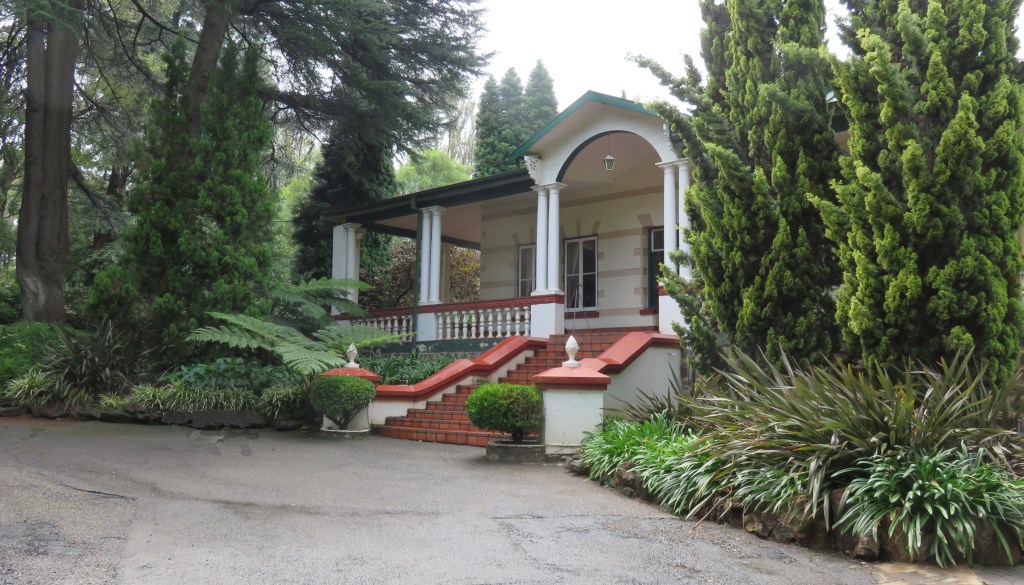 The house build in 1896 for the first factory manager, it is well worth a visit, having been kept in the style of the late 19th century.
The house build in 1896 for the first factory manager, it is well worth a visit, having been kept in the style of the late 19th century.
The Casino
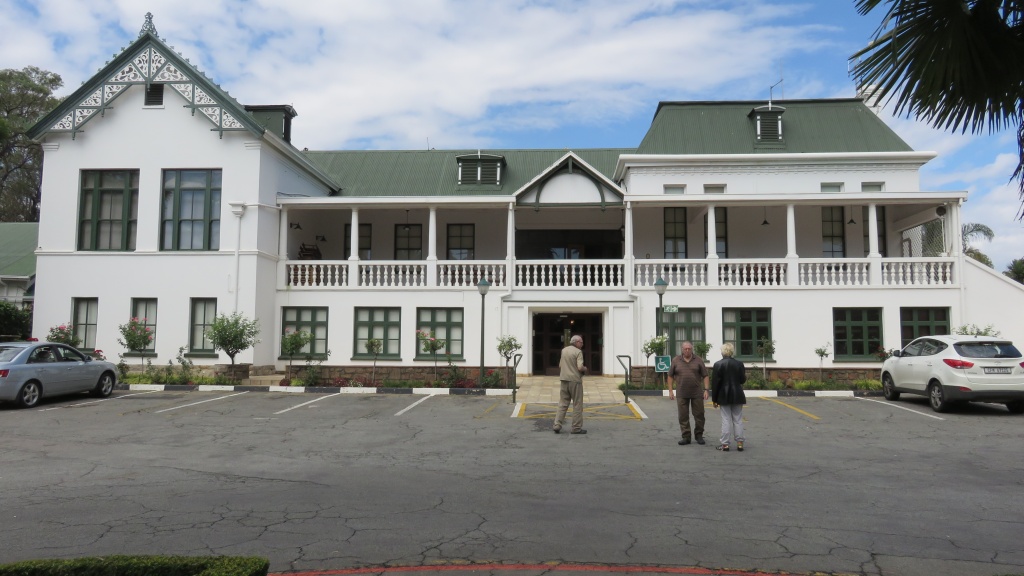
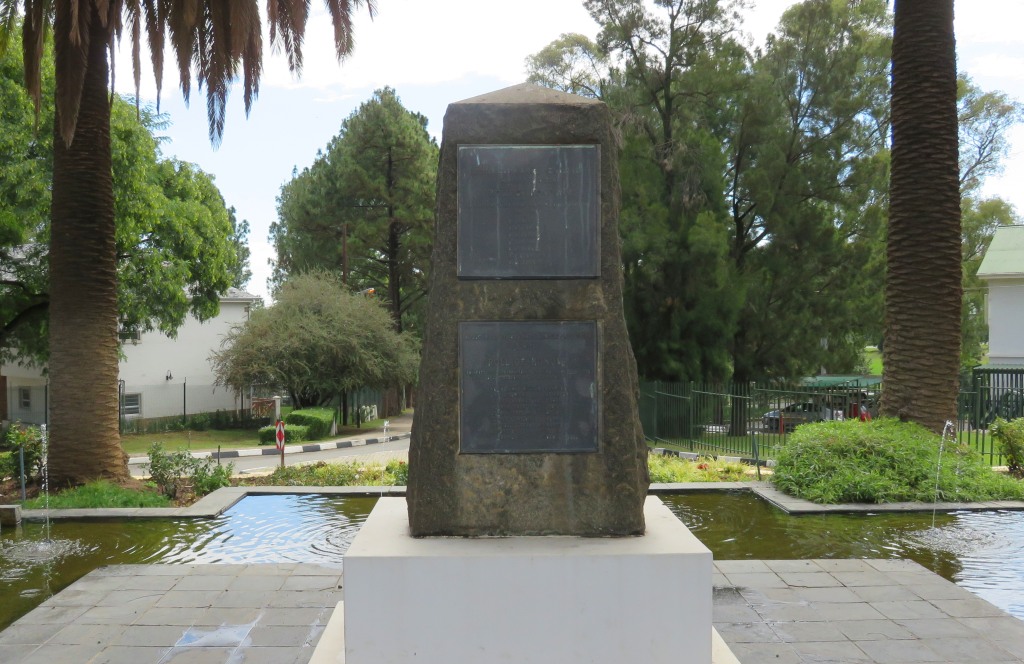 This was the recreation club for managers and senior staff built by Franz Hoenig. There was another venue for the workers. Now it is the office of Zendai (see below).
This was the recreation club for managers and senior staff built by Franz Hoenig. There was another venue for the workers. Now it is the office of Zendai (see below).
In Front of the club is a memorial to the employees who lost their lifes during the two world wars. I like to go into more detail here since I don't think this memorial gets that much attention. The inscription reads:
| British South African Explosives | African Explosives and Chemical Industries |
| Company Limited | Limited |
| Roll of Honour | Roll of Honour |
| 1914-1918 | Employees of Modderfontein factory who gave their lives |
| D. Duffy | in the second great war 1939-1945 |
| E.W.Gibson | DJW Compton |
| P.H.Harries | JD De Jongh |
| D.Taylor | AM Fisher |
| F.W.Barnes | JC Lewis |
| TAC McCarr | JF Mills |
| F.W.Salisbury | CM Morris |
| PA Mortin | |
| ? Teerink | |
| L van Brugel |
What is amazing is that some of the names mentioned I still came accross during my carrier with the company, such as Barnes, Morris, Fisher, Gibson and Taylor. An indication that to many AE&CI was a family company.
The Chinese
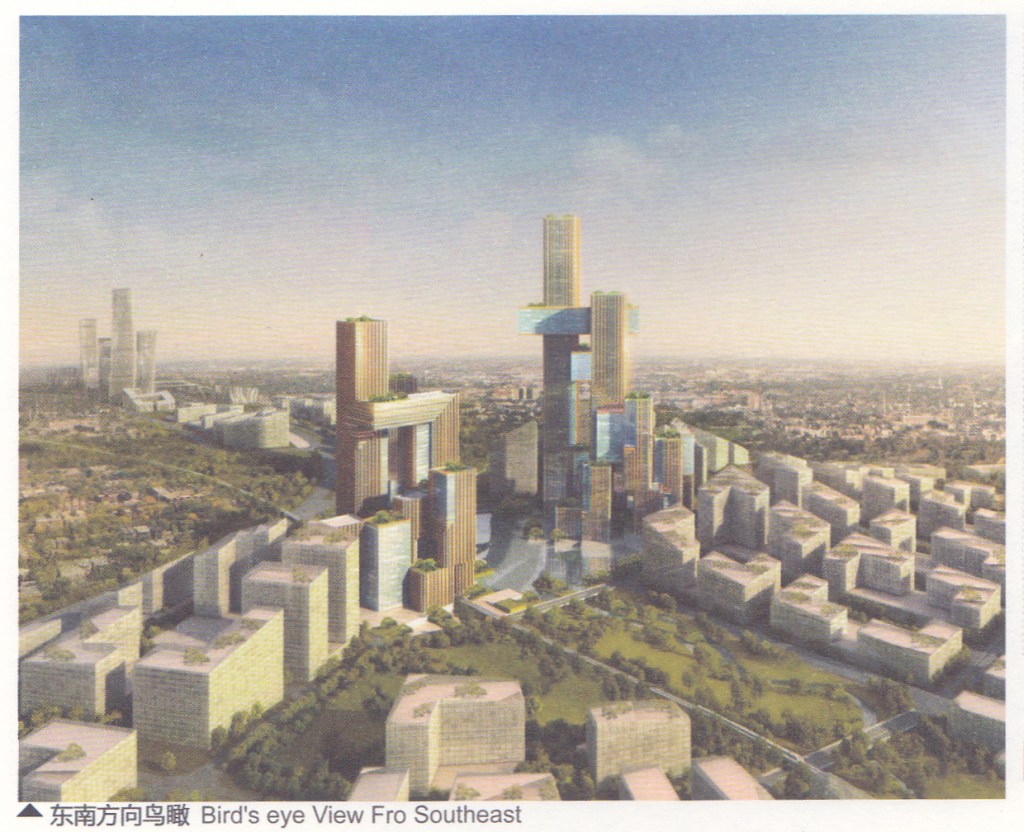 This refers to the sale of the property to a Chinese company, Zendai. That is 2400ha in total. I am not sure it includes the factory.
This refers to the sale of the property to a Chinese company, Zendai. That is 2400ha in total. I am not sure it includes the factory.
The plan is, and we had a quick run down, to build a new city with high rise buildings housing about 100 000 people. Total investment over the next 15 years is envisaged to be R84 Billion. I borrowed the picture from their brochure, I hope they forgive me. It certainly is a shot in the arm for the country and I wish them best of luck.
P.S.: August 2019, unfortunately nothing has come of these great plans, Zendai has sold to another Chinese company which will carry on with the project but on a much reduced scale.
Anglican Church
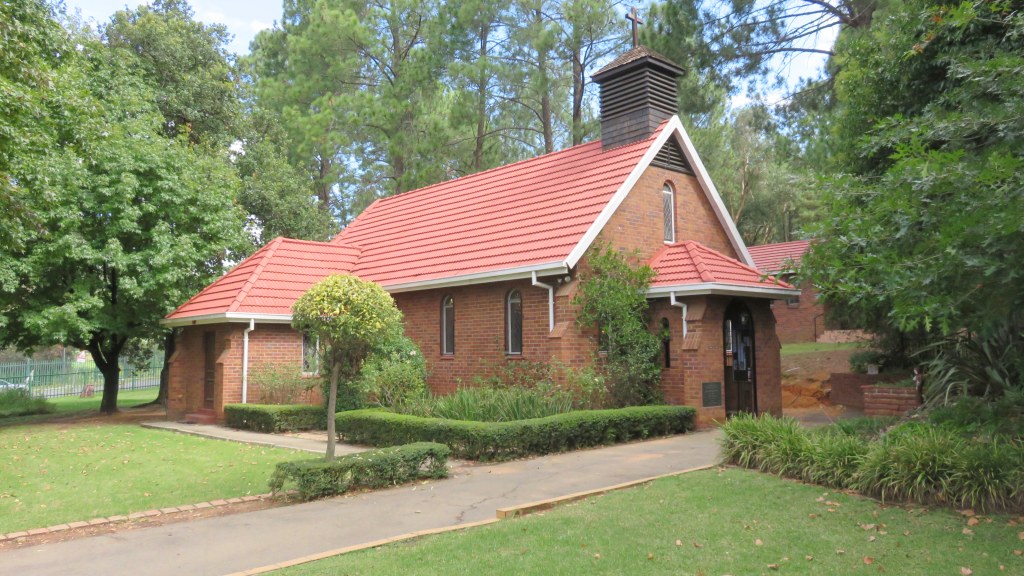 Otherwise known as 'the little church in the woods'. Officially it is the Chapel of St Francis in the Woods. It was erected in 1953, the foundation stone was laid by the then factory manager, Edwin Taberner.
Otherwise known as 'the little church in the woods'. Officially it is the Chapel of St Francis in the Woods. It was erected in 1953, the foundation stone was laid by the then factory manager, Edwin Taberner.
Shopping Center
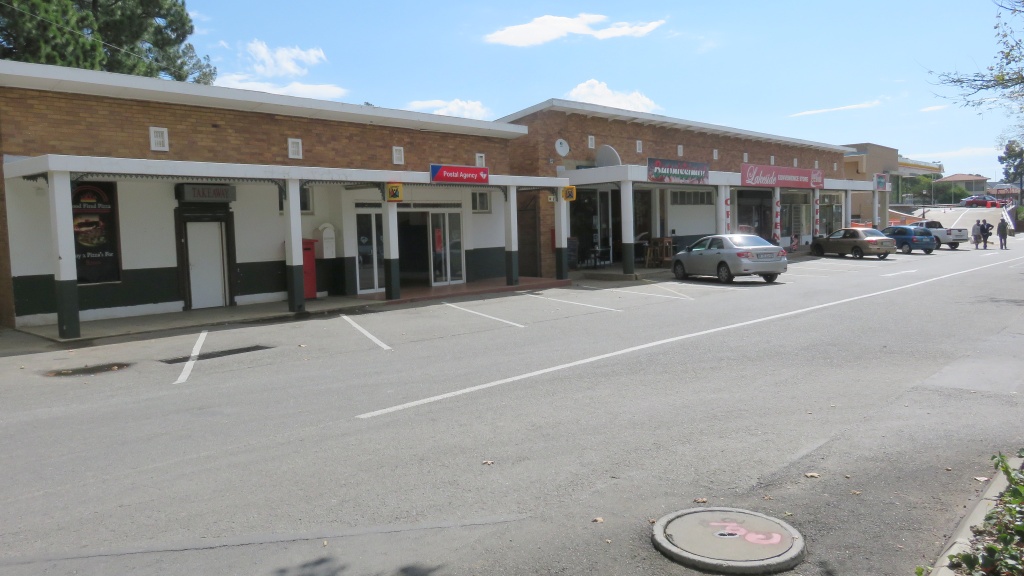
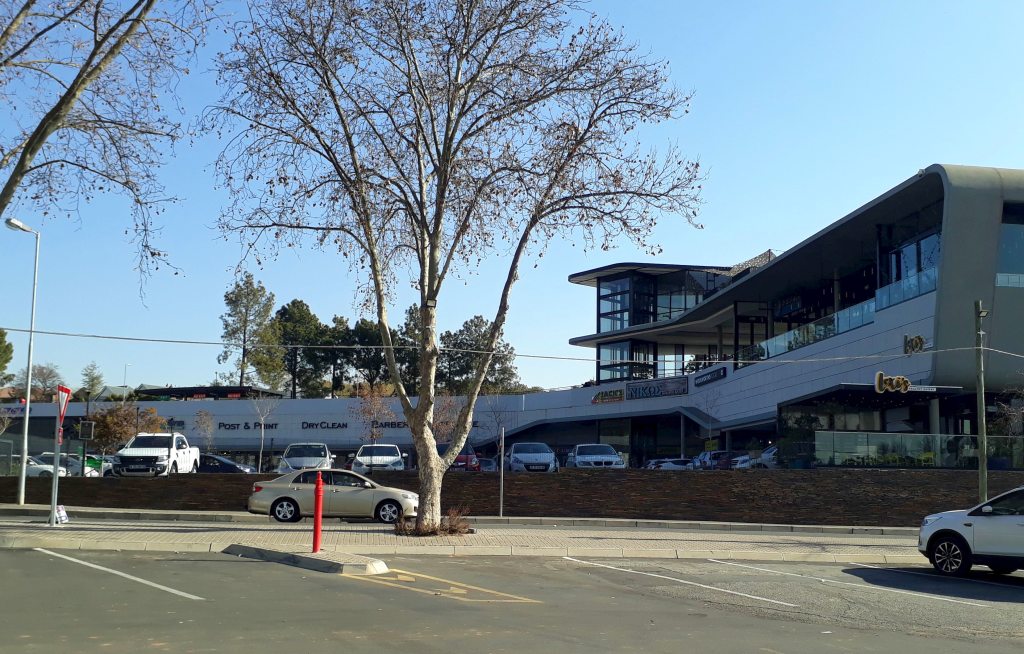 I am not sure when this was built, looking at the architecture possibly in the 30th or 40th of last century.
I am not sure when this was built, looking at the architecture possibly in the 30th or 40th of last century.
update: August 2017, take a good look at the picture, its the last time you can see it, it's gone, demolished, to make room for a new shopping centre.
And another update, July 2020, this is what has been put into its place.
Mimosa Lodge
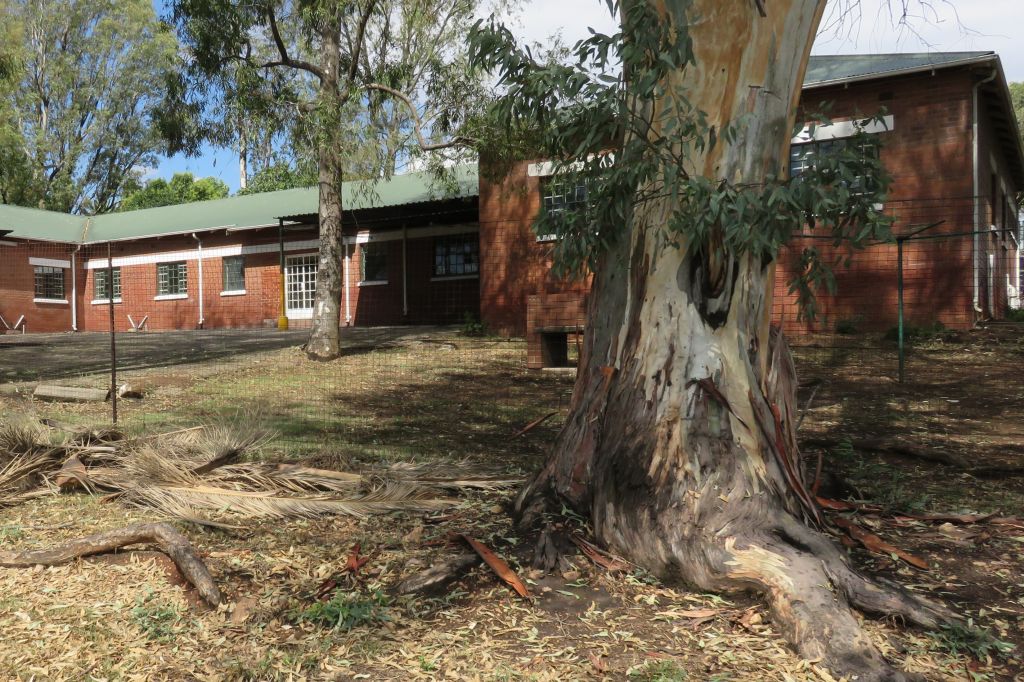 I am only including it because this is where I stayed for about a year, 1965/66, before being transferred to Sasolburg. It was the men's single quarters for the factory workers.
I am only including it because this is where I stayed for about a year, 1965/66, before being transferred to Sasolburg. It was the men's single quarters for the factory workers.
During that year I worked on the Ammonium Nitrate plant, the old Fauser plant established in the 1930th, and on the Nitric Acid plants, POP 2 and 3, that is where I operated the compressor above. All these plants are gone now.
Modderfontein Reserve
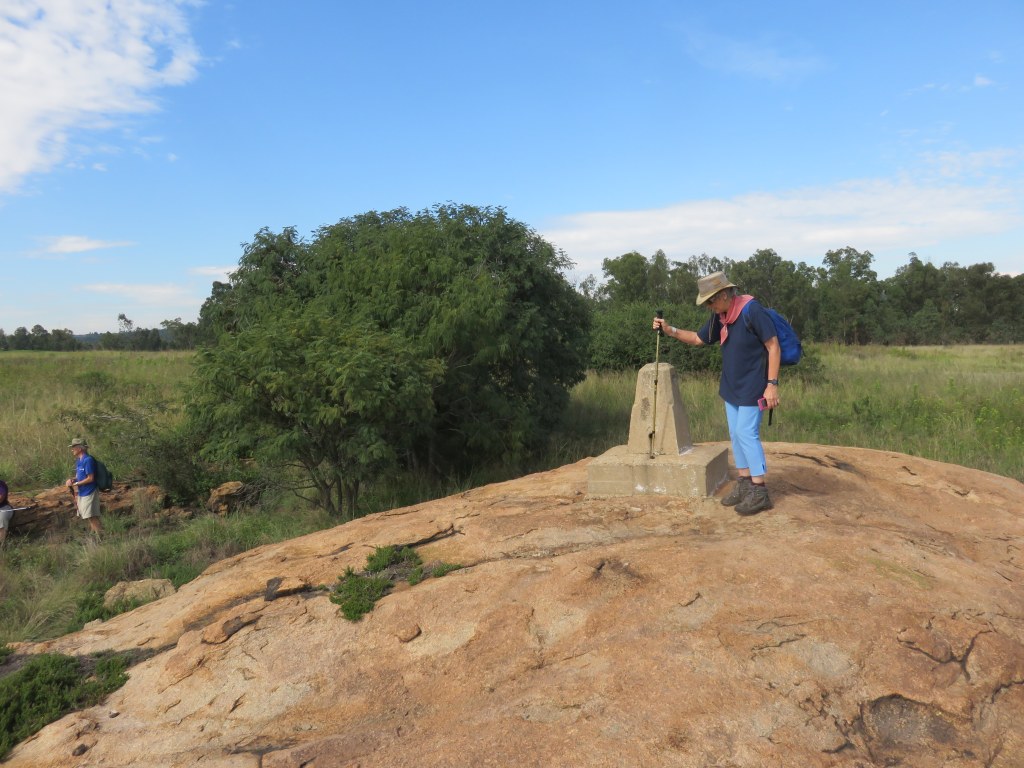
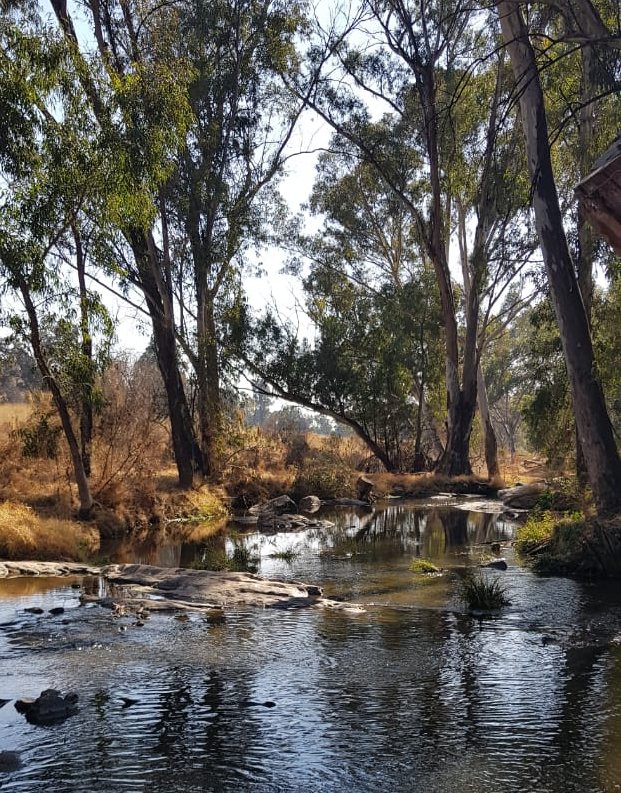 The manufacturing process of explosives needs large areas of land. That is because inventory in each processing unit is kept below a certain limit such that the damage done by a potential explosions is not to excessive. The distances between the units is also fairly large such that a domino effect is not possible.
The manufacturing process of explosives needs large areas of land. That is because inventory in each processing unit is kept below a certain limit such that the damage done by a potential explosions is not to excessive. The distances between the units is also fairly large such that a domino effect is not possible.
With the decline in explosives manufacture a large area became available which the company declared as a reserve and made it available to the public for hiking, cycling, running and picnicking.
It is not an area with pristine nature, but it's nice enough to invite for a visit. Central to it is the Modderfontein spruit with its four dams. The fish eagle dam contains some very large carps and during one of my visits I did hear the call of a fish eagle. Of geological interest are some granite outcrops going back to about 3 Billion (109) years.
References
1. TV Bulpin, Lost Trails of the Transvaal, Thomas Nelson and Sons, 1965
2. A.P.Cartwright, The Dynamite Company, Purnell & Sons, 1964
3. ZENDAI MODDERFONTEIN, brochure issued by the ZENDAI Group